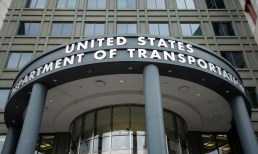That prediction is consistent with PYMNTS’ research that showed more than 70 percent of consumers said their digital habits would remain entrenched after the virus recedes entirely.
If there’s a silver lining to the pandemic, said Gerber, it’s that “we’ve taken the hardships and helped accelerate innovation.”
Technology and the ever-increasing deluge of data are giving a tailwind to the rise of the Internet of Things (IoT), he said. Artificial intelligence (AI) and machine learning (ML) are helping to create more curated, personalized experiences.
And all of these new experiences are being created and offered at a time when consumers are still grappling with the economic and lingering impact of the pandemic.
At the same time, noted Gerber, Mastercard’s own data show that the 74 percent of new retail businesses created in the United States since April were digital firms, not brick-and-mortar operators. That shows that entrepreneurs themselves are cognizant that they should (and must) meet the consumer where he or she wants to interact. Virtual storefronts have the strategic advantage of being able to reach a wide range of customers while carrying relatively low operating costs.
Advertisement: Scroll to Continue
What 5G and the digital shift mean, he said, is that people can create companies more quickly, and at a lower cost, than ever before — and that means new jobs can be created with speed, too.
With the continued shift to digital commerce, 5G can help streamline operations, improve payments and enhance the range of services companies can offer customers.
Innovation Buckets
That innovation can be placed into different buckets, said Gerber. There are the payments innovation buckets in which plastic cards have given way to virtual cards and digital wallets. Peer-to-peer (P2P) volumes have swelled, and even B2B payments are going the online route.
Another innovation lies with digital currencies, said Gerber, while open banking has enabled financial institutions (FIs) and FinTechs to address more consumer pain points than ever before. The emergence of 5G means that broader connectivity, globally speaking, will bring a range of financial services to the underbanked populations of the world.
AI can help firms like Mastercard focus on IoT initiatives that can have significant impacts on how day-to-day tasks and interactions can change. He pointed to connected cars as an example.
But none of it works well without the critical “bucket” of security and privacy.
Digital commerce, said Gerber, is not just about what happens on a mobile device or as part of what happens in a store. Now it extends even beyond the transaction, where retailers can reach out to consumers to make sure they are happy with the services or goods they’ve purchased. The engagement can include self-service options, and even the ability to turn subscriptions on and off.
“Across the spectrum, the full life cycle of engagement with consumers is getting better,” said Gerber. “Consumers have more options than ever before” via that most accessible of access points — the mobile devices — that serve as gateways to platforms. Through it all, consumers are looking for simplified experiences to get the basic things in life done before we tackle the new, exciting features — and get our washing machines talking to the printer and the fridge ordering eggs automatically when they’re running low.
Forging The Bonds Of Trust
As so much of life is now lived online, trust must be established between consumers and enterprises, said Gerber.
“How do we bring things like digital identities into behavioral biometrics?” he said. “How do we establish trust in the digital ecosystem as humans?”
Security is no longer simply about transactions, about making sure the payment goes through, he said. Security should be woven through the entire consumer experience, right up to the hypothetical return of an unwanted item.
Gerber noted that offerings such as Ethoca’s Consumer Clarity can help consumers access detailed information about their purchases (such as purchase location, clear merchant name and logo, and digital receipts) by allowing merchants and issuers to collaborate and share clear and transparent transaction information with cardholders through their banking apps. But this is just the start of the possibilities.
Thanks to this new connection between merchants and issuers, consumers will ultimately be able to access a range of information and services not currently available to them. This could include instruction manuals, subscription information, loyalty programs and more — all within their trusted digital banking application. For issuers, this creates deeper cardholder engagement with their applications. As for merchants, it provides another channel to connect with customers — improving experience and loyalty.
“We’re creating a secure touchpoint between the consumer and the merchant within the banking environment,” he said.
Fortunately, there are more tools than ever before in enterprises’ arsenals to make sure that all goes smoothly, from the point of onboarding to post-purchase follow-ups. There’s still work to be done in educating businesses about what they can do to keep trust unbroken.
After all, he said, consumers expect that companies will not use data beyond the confines of the permission they’ve been given. “If you do, they will drop you,” he said. “They will walk away, and they will move on, and you will not get them back.”
A uniform playbook of standards — of engaging on payments, privacy, security and data collection — will keep companies in sync with building and maintaining trust from their end users, said Gerber. Roadmaps on how to do this have been set by payment card industry (PCI) standards, and there have been efforts by consortiums and councils to establish best practices.
“Otherwise, the regulators are going to tell us what to do,” he told Webster. “I think we can do a good job of self-regulating. If we don’t get digital identity, security and privacy right, we’re not going to realize the benefits of the huge opportunities in front of us.”



